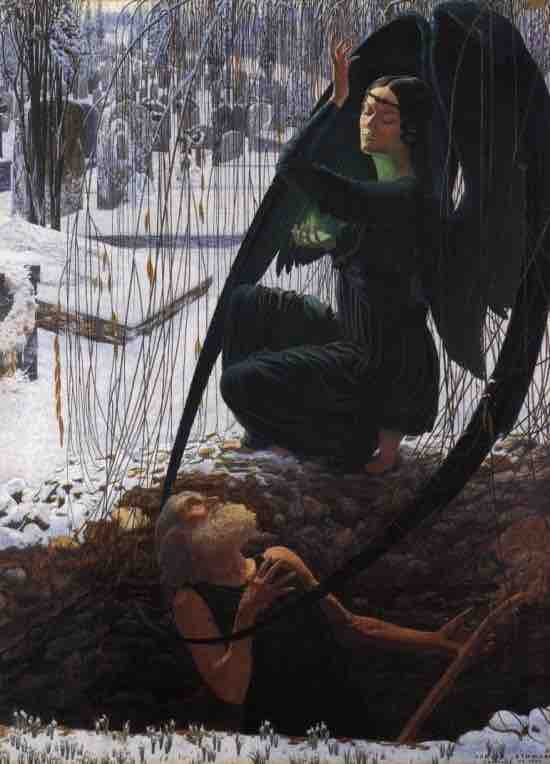A Move Toward Meaning
Symbolism was a late 19th century art movement of French, Russian, and Belgian origin that manifested in poetry and other arts. The term "symbolism" is derived from the word "symbol" which derives from the Latin symbolum, a symbol of faith, and symbolus, a sign of recognition. Symbolism was largely a reaction against naturalism and realism, anti-idealistic styles which were attempts to represent reality in its gritty particularity, and to elevate the humble and the ordinary over the ideal. Symbolism, on the other hand, favored spirituality, the imagination, dreams, emotions and the personal subjectivity of the artist as a tool to illustrate larger truths. Thematically, Symbolist artists tended to focus on themes surrounding the occult, decadence, melancholy and death.
The Suicide of Dorothy Hale by Frida Kahlo, 1939
While this painting was a commission, it can still be seen to demonstrate Kahlo's signature use of symbolism to express her subjective truth.
A Search for Hidden Truth
Symbolists believed that art should represent absolute truths that could only be described indirectly. Thus, they wrote and painted in a very metaphorical and suggestive manner, endowing particular images or objects with symbolic meaning. Jean Moréas published the Symbolist Manifesto ("Le Symbolisme") in Le Figaro on 18 September 1886 (see 1886 in poetry). Moréas announced that symbolism was hostile to "plain meanings, declamations, false sentimentality and matter-of-fact description," and that its goal was to "clothe the Ideal in a perceptible form" whose "goal was not in itself, but whose sole purpose was to express the Ideal. " In other words, symbolism expressed scenes from nature, human activities, and all other real world phenomena not for their own sake, but as perceptible surfaces created to represent their esoteric affinities with primordial ideals .

La mort du fossoyeur
La mort du fossoyeur ("The death of the gravedigger") by Carlos Schwabe is a visual compendium of symbolist motifs. Death and angels, pristine snow, and the dramatic poses of the characters all express symbolist longings for transfiguration "anywhere, out of the world. "
The symbolist style has frequently been confused with decadence and, by the late 1880s, the terms "symbolism" and "decadence" were understood to be almost synonymous. Though the aesthetics of the styles can be considered similar in some ways, the two remain distinct. The symbolists emphasized dreams, ideals, and fantastical subject matter, while the Decadents cultivated précieux, ornamented, or hermetic styles, and morbid subject matters. The symbolist painters were an important influence on expressionism and surrealism in painting, two movements which descend directly from symbolism proper. The harlequins, paupers, and clowns of Pablo Picasso's "Blue Period" show the influence of symbolism, and especially of Puvis de Chavannes. In Belgium, symbolism became so popular that it came to be thought of as a national style: the static strangeness of painters like René Magritte can be considered as a direct continuation of symbolism. The work of some symbolist visual artists, such as Jan Toorop, directly affected the curvilinear forms of art nouveau.

The Caress
Belgian symbolist Fernand Khnopff's The Caress